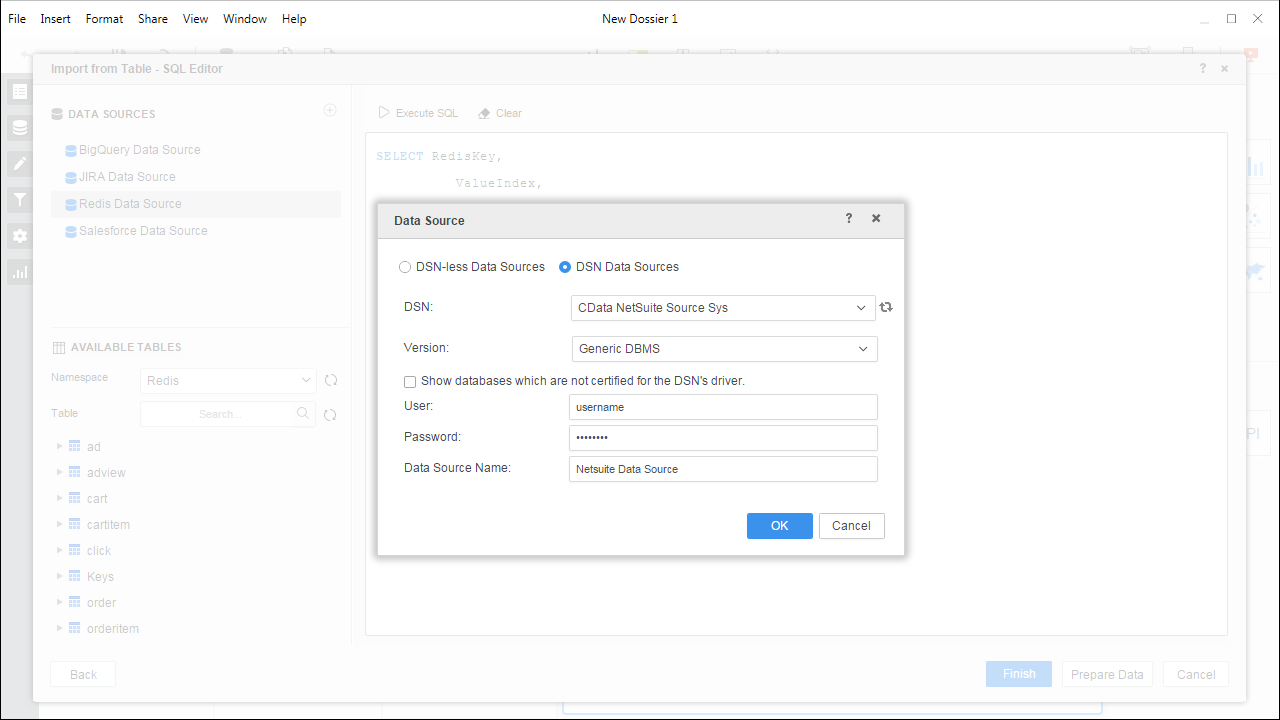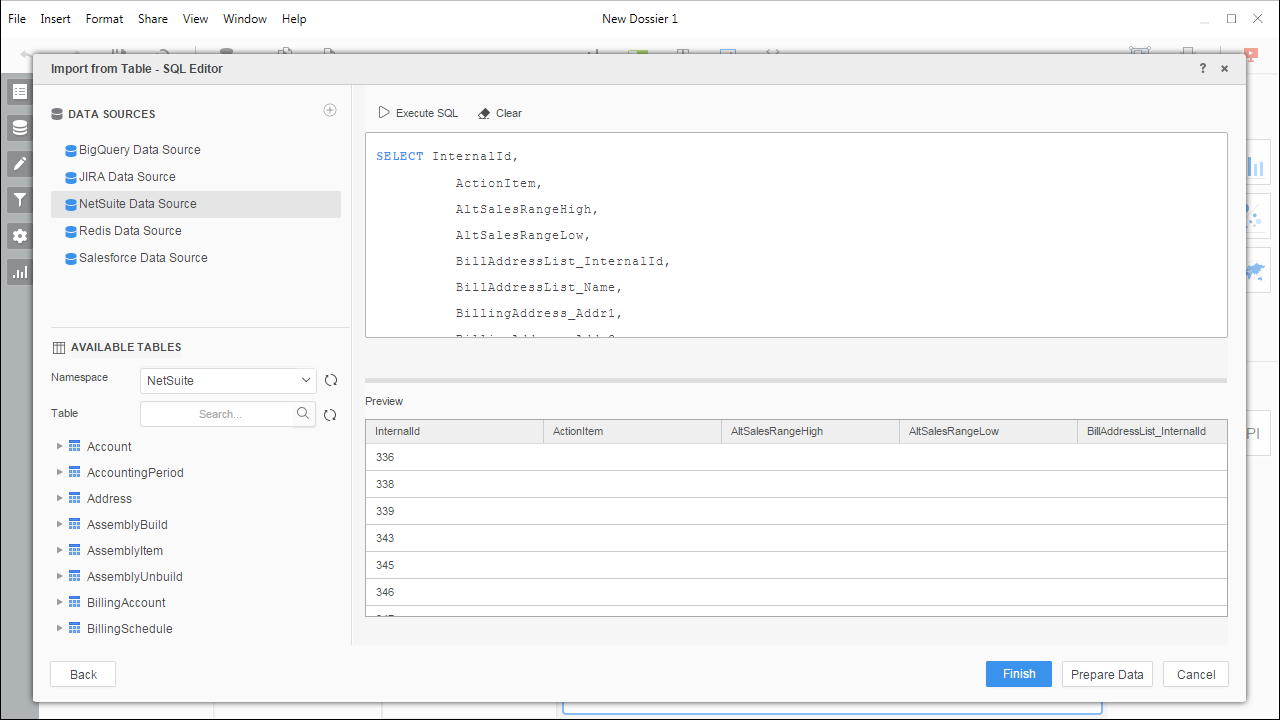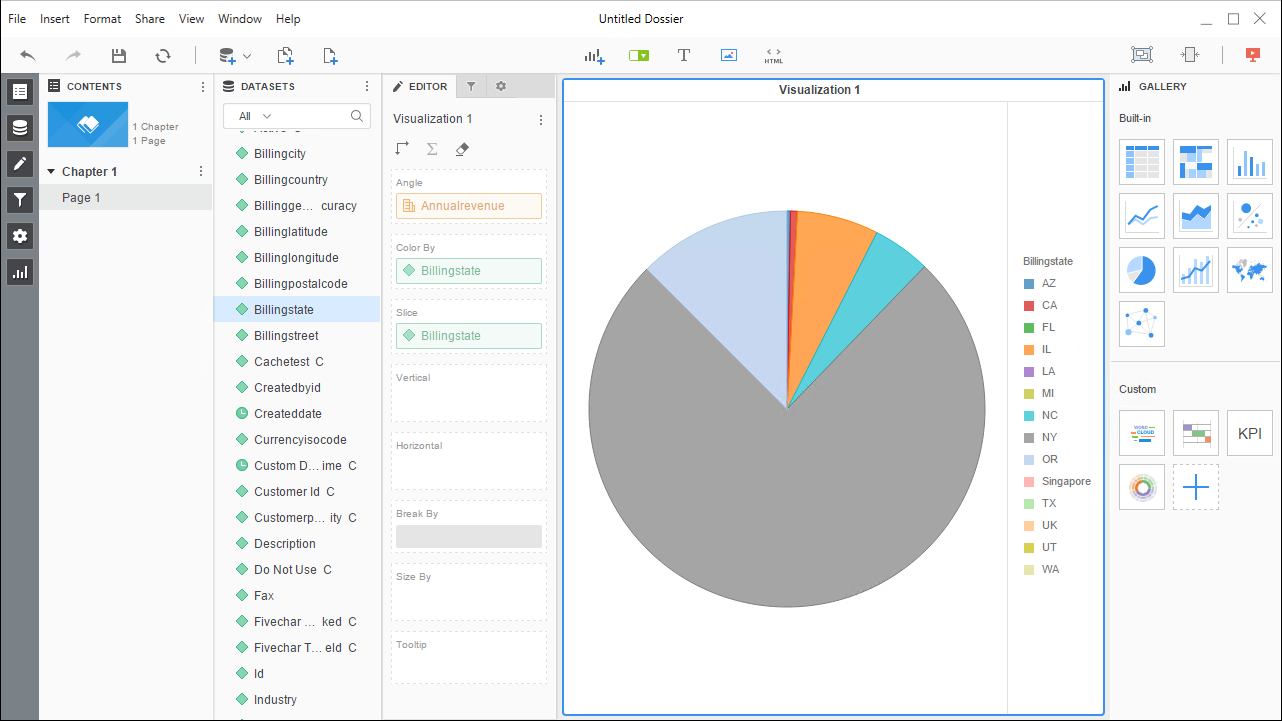Discover how a bimodal integration strategy can address the major data management challenges facing your organization today.
Get the Report →Use the CData ODBC Driver for IBM Cloud Object Storage in MicroStrategy Desktop
Connect to IBM Cloud Object Storage data in MicroStrategy Desktop using the CData ODBC Driver for IBM Cloud Object Storage.
MicroStrategy is an analytics and mobility platform that enables data-driven innovation. When paired with the CData ODBC Driver for IBM Cloud Object Storage, you gain database-like access to live IBM Cloud Object Storage data from MicroStrategy, expanding your reporting and analytics capabilities. In this article, we walk through adding IBM Cloud Object Storage as a data source in MicroStrategy Desktop and creating a simple visualization of IBM Cloud Object Storage data.
The CData ODBC Driver offers unmatched performance for interacting with live IBM Cloud Object Storage data in MicroStrategy due to optimized data processing built into the driver. When you issue complex SQL queries from MicroStrategy to IBM Cloud Object Storage, the driver pushes supported SQL operations, like filters and aggregations, directly to IBM Cloud Object Storage and utilizes the embedded SQL Engine to process unsupported operations (often SQL functions and JOIN operations) client-side. With built-in dynamic metadata querying, you can visualize and analyze IBM Cloud Object Storage data using native MicroStrategy data types.
Connect to IBM Cloud Object Storage as an ODBC Data Source
Information for connecting to IBM Cloud Object Storage follows, along with different instructions for configuring a DSN in Windows and Linux environments.
Register a New Instance of Cloud Object Storage
If you do not already have Cloud Object Storage in your IBM Cloud account, follow the procedure below to install an instance of SQL Query in your account:
- Log in to your IBM Cloud account.
- Navigate to the page, choose a name for your instance and click Create. You will be redirected to the instance of Cloud Object Storage you just created.
Connecting using OAuth Authentication
There are certain connection properties you need to set before you can connect. You can obtain these as follows:
API Key
To connect with IBM Cloud Object Storage, you need an API Key. You can obtain this as follows:
- Log in to your IBM Cloud account.
- Navigate to the Platform API Keys page.
- On the middle-right corner click "Create an IBM Cloud API Key" to create a new API Key.
- In the pop-up window, specify the API Key name and click "Create". Note the API Key as you can never access it again from the dashboard.
Cloud Object Storage CRN
If you have multiple accounts, you will need to specify the CloudObjectStorageCRN explicitly. To find the appropriate value, you can:
- Query the Services view. This will list your IBM Cloud Object Storage instances along with the CRN for each.
- Locate the CRN directly in IBM Cloud. To do so, navigate to your IBM Cloud Dashboard. In the Resource List, Under Storage, select your Cloud Object Storage resource to get its CRN.
Connecting to Data
You can now set the following to connect to data:
- InitiateOAuth: Set this to GETANDREFRESH. You can use InitiateOAuth to avoid repeating the OAuth exchange and manually setting the OAuthAccessToken.
- ApiKey: Set this to your API key which was noted during setup.
- CloudObjectStorageCRN (Optional): Set this to the cloud object storage CRN you want to work with. While the connector attempts to retrieve this automatically, specifying this explicitly is recommended if you have more than Cloud Object Storage account.
When you connect, the connector completes the OAuth process.
- Extracts the access token and authenticates requests.
- Saves OAuth values in OAuthSettingsLocation to be persisted across connections.
When you configure the DSN, you may also want to set the Max Rows connection property. This will limit the number of rows returned, which is especially helpful for improving performance when designing reports and visualizations.
Windows
If you have not already, first specify connection properties in an ODBC DSN (data source name). This is the last step of the driver installation. You can use the Microsoft ODBC Data Source Administrator to create and configure ODBC DSNs.
Linux
If you are installing the CData ODBC Driver for IBM Cloud Object Storage in a Linux environment, the driver installation predefines a system DSN. You can modify the DSN by editing the system data sources file (/etc/odbc.ini) and defining the required connection properties.
/etc/odbc.ini
[CData IBMCloudObjectStorage Sys]
Driver = CData ODBC Driver for IBM Cloud Object Storage
Description = My Description
ApiKey = myApiKey
CloudObjectStorageCRN = MyInstanceCRN
Region = myRegion
OAuthClientId = MyOAuthClientId
OAuthClientSecret = myOAuthClientSecret
For specific information on using these configuration files, please refer to the help documentation (installed and found online).
Connect to and Visualize IBM Cloud Object Storage Data using MicroStrategy Desktop
In addition to connecting IBM Cloud Object Storage in MicroStrategy enterprise products, you can connect to IBM Cloud Object Storage in MicroStrategy Desktop. Follow the steps below to add IBM Cloud Object Storage data as a dataset and create visualizations and reports of IBM Cloud Object Storage data.
- Open MicroStrategy Desktop and create a new dossier.
- In the datasets panel, click New Data, select Databases, and select Type a Query as the Import Option.
- Add a new data source and choose DSN data sources.
- Choose the DSN you previously configured (likely CData IBMCloudObjectStorage Sys) and select Generic DBMS in the Version menu.
- Set the User and Password properties for the DSN (or use placeholder values) and name the data source.
- Select the new database instance to view the tables. You may need to manually click the search icon in the Available Tables section to see the tables.
- Create a SQL query for the IBM Cloud Object Storage data (see below) and click Execute SQL to test the query.
SELECT * FROM Objects![Querying IBM Cloud Object Storage for data.]() NOTE: Since we create a live connection, we can execute a SELECT * query and utilize the filtering and aggregation features native to the MicroStrategy products.
NOTE: Since we create a live connection, we can execute a SELECT * query and utilize the filtering and aggregation features native to the MicroStrategy products. - Click Finish and choose to connect live.
- Choose a visualization, choose fields to display (data types are discovered automatically through dynamic metadata discovery) and apply any filters to create a new visualization of IBM Cloud Object Storage data. Where possible, the complex queries generated by the filters and aggregations will be pushed down to IBM Cloud Object Storage, while any unsupported operations (which can include SQL functions and JOIN operations) will be managed client-side by the CData SQL Engine embedded in the driver.
![Visualize IBM Cloud Object Storage data.]()
- Once you are finished configuring the dossier, click File -> Save.

Using the CData ODBC Driver for IBM Cloud Object Storage in MicroStrategy Desktop, you can easily create robust visualizations and reports on IBM Cloud Object Storage data. Read our other articles on connecting to IBM Cloud Object Storage in MicroStrategy and connecting to IBM Cloud Object Storage in MicroStrategy Web for more examples.






 NOTE: Since we create a live connection, we can execute a SELECT * query and utilize the filtering and aggregation features native to the MicroStrategy products.
NOTE: Since we create a live connection, we can execute a SELECT * query and utilize the filtering and aggregation features native to the MicroStrategy products.
